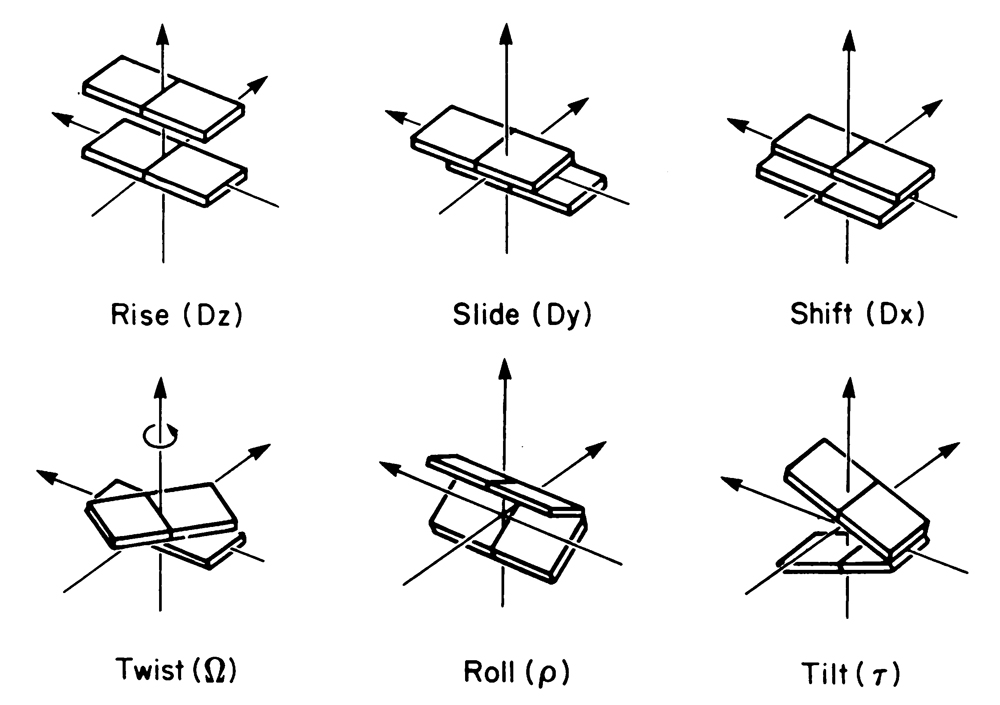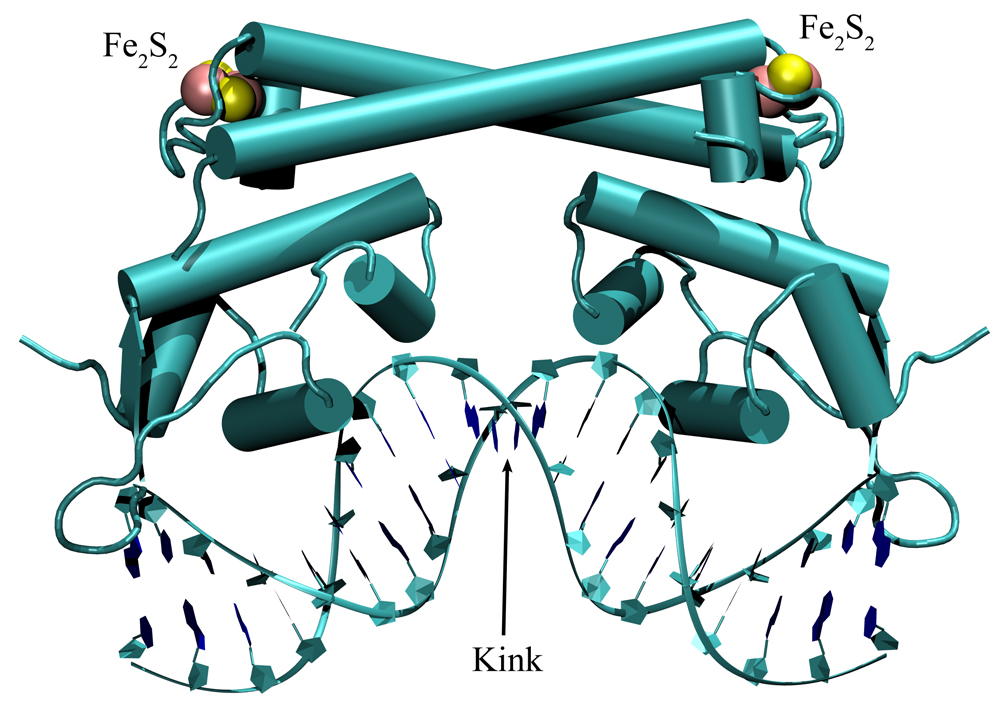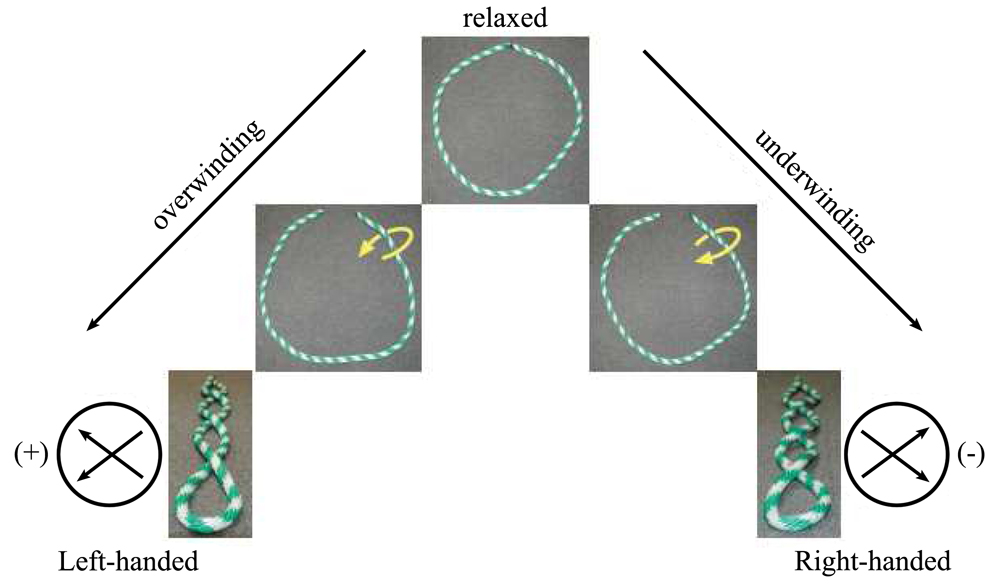The native structure of DNA in solution is B-form, which is an antiparallel double-helical structure. Yet, exotic DNA structures are known to exist that have crucial biological importance. For example, three billion base pair human genome is packaged around nucleosomes that each wrap 147 base pairs around histone proteins. This tight wrapping creates sharp bending in DNA. This architecture creates a compact library in the cells that stores the genetic informations in nucleosome arrays called chromatin.
 Current force fields are developed and optimized to predict the native B-form structure of DNA. As described above, it is known that DNA can bend under special circumstances. When it is bent, geometries of local base steps such as slide, shift, rise, roll, tilt, and twist can change. These local base step parameters were used by Morozov and co-workers who developed an algorithm to calculate the bending energies of DNA in nucleosome. We are currently working on developing a much better model to predict nucleosome formation in Saccharomyces cerevisiae.
Current force fields are developed and optimized to predict the native B-form structure of DNA. As described above, it is known that DNA can bend under special circumstances. When it is bent, geometries of local base steps such as slide, shift, rise, roll, tilt, and twist can change. These local base step parameters were used by Morozov and co-workers who developed an algorithm to calculate the bending energies of DNA in nucleosome. We are currently working on developing a much better model to predict nucleosome formation in Saccharomyces cerevisiae.
 Similar to nucleosomes, transcription factors can bind to DNA and bend it. These transcription factors are important because they bind to specific DNA sequences and regulate the gene expression. As an example, MerR families of proteins are transcriptional activators highly sensitive to metal ions. They are seen in Escherichia coli and other Gram-negative bacteria, and are responsible for removing toxic metals from the cells. The first metal-dependent transcriptional activator is MerR. It activates the mercury resistance (mer) genes in the presence of Hg(II) ions and controls the synthesis of MerR. MerR binds to the promoter sequence of the gene, and in this native form does not activate transcription. In the presence of mercury, MerR twists the DNA so that the correct DNA shape is adopted. In this twisted form, RNA polymerase binds to DNA to produce messenger RNA. Without this correct DNA shape, transcription cannot be initiated. The way that Hg(II) interacts with MerR and creates the twisted DNA shape is still not known. In collaboration with O’Halloran Lab we studied the structural properties of CueR-DNA complexes.
Similar to nucleosomes, transcription factors can bind to DNA and bend it. These transcription factors are important because they bind to specific DNA sequences and regulate the gene expression. As an example, MerR families of proteins are transcriptional activators highly sensitive to metal ions. They are seen in Escherichia coli and other Gram-negative bacteria, and are responsible for removing toxic metals from the cells. The first metal-dependent transcriptional activator is MerR. It activates the mercury resistance (mer) genes in the presence of Hg(II) ions and controls the synthesis of MerR. MerR binds to the promoter sequence of the gene, and in this native form does not activate transcription. In the presence of mercury, MerR twists the DNA so that the correct DNA shape is adopted. In this twisted form, RNA polymerase binds to DNA to produce messenger RNA. Without this correct DNA shape, transcription cannot be initiated. The way that Hg(II) interacts with MerR and creates the twisted DNA shape is still not known. In collaboration with O’Halloran Lab we studied the structural properties of CueR-DNA complexes.
 In all living cells, DNA is underwound (negative supercoling), which is vital to cell survival. In order to successfully replicate the genome, topoisomerases regulate the supercoiled state of DNA. By breaking the strands, they can unknot, decatenate, supercoil, and relax the DNA and form exotic structures. Positively and negatively supercoiled DNAs have different properties. While negative supercoiling facilitates DNA replication and transcription positive supercoiling creates resistance to strand separation and increase in stability at higher temperatures. A better understanding of these mechanisms would assist experimentalists in cancer research.
In all living cells, DNA is underwound (negative supercoling), which is vital to cell survival. In order to successfully replicate the genome, topoisomerases regulate the supercoiled state of DNA. By breaking the strands, they can unknot, decatenate, supercoil, and relax the DNA and form exotic structures. Positively and negatively supercoiled DNAs have different properties. While negative supercoiling facilitates DNA replication and transcription positive supercoiling creates resistance to strand separation and increase in stability at higher temperatures. A better understanding of these mechanisms would assist experimentalists in cancer research.